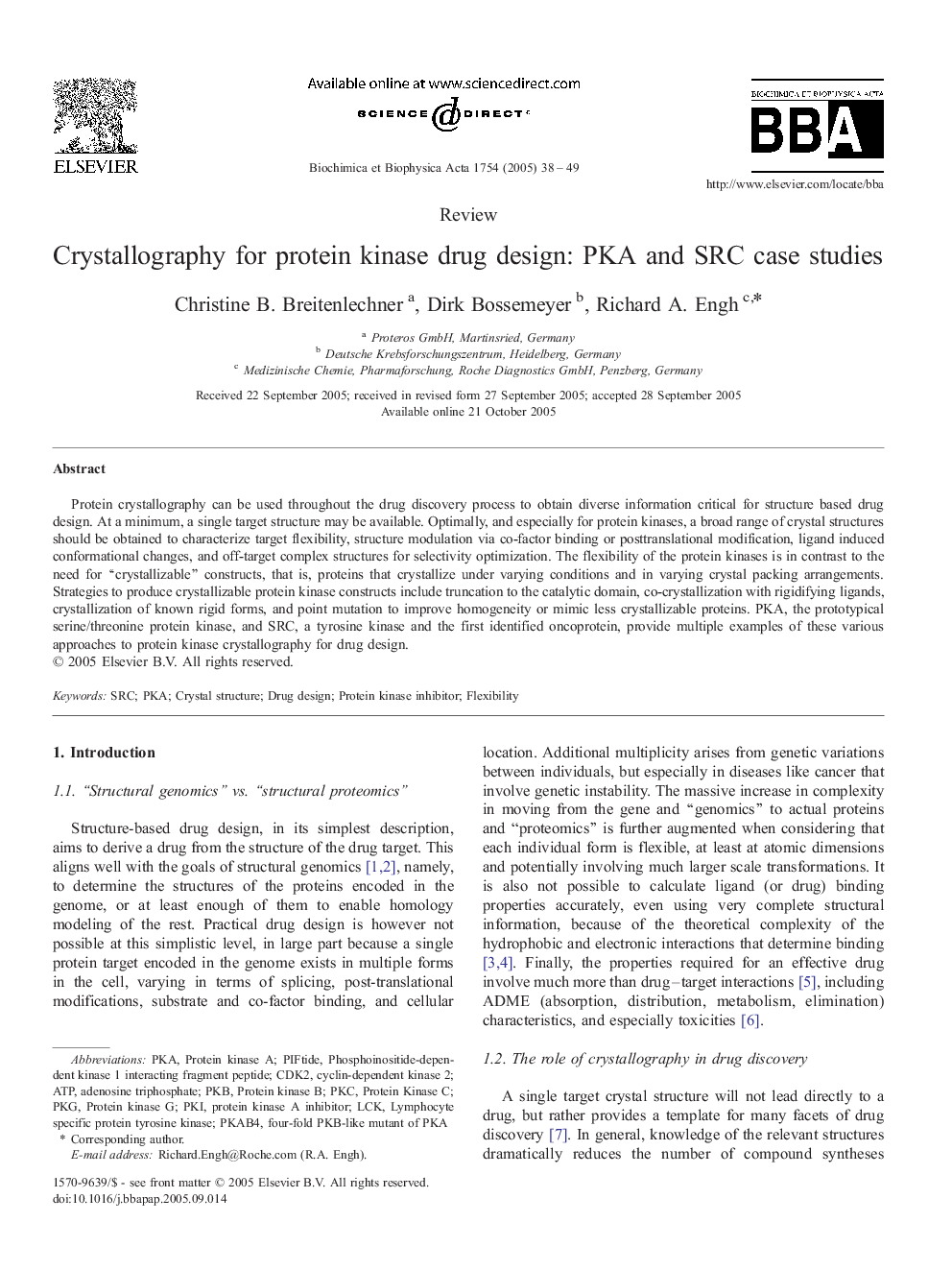| Article ID | Journal | Published Year | Pages | File Type |
|---|---|---|---|---|
| 9745071 | Biochimica et Biophysica Acta (BBA) - Proteins and Proteomics | 2005 | 12 Pages |
Abstract
Protein crystallography can be used throughout the drug discovery process to obtain diverse information critical for structure based drug design. At a minimum, a single target structure may be available. Optimally, and especially for protein kinases, a broad range of crystal structures should be obtained to characterize target flexibility, structure modulation via co-factor binding or posttranslational modification, ligand induced conformational changes, and off-target complex structures for selectivity optimization. The flexibility of the protein kinases is in contrast to the need for “crystallizable” constructs, that is, proteins that crystallize under varying conditions and in varying crystal packing arrangements. Strategies to produce crystallizable protein kinase constructs include truncation to the catalytic domain, co-crystallization with rigidifying ligands, crystallization of known rigid forms, and point mutation to improve homogeneity or mimic less crystallizable proteins. PKA, the prototypical serine/threonine protein kinase, and SRC, a tyrosine kinase and the first identified oncoprotein, provide multiple examples of these various approaches to protein kinase crystallography for drug design.
Keywords
Related Topics
Physical Sciences and Engineering
Chemistry
Analytical Chemistry
Authors
Christine B. Breitenlechner, Dirk Bossemeyer, Richard A. Engh,
